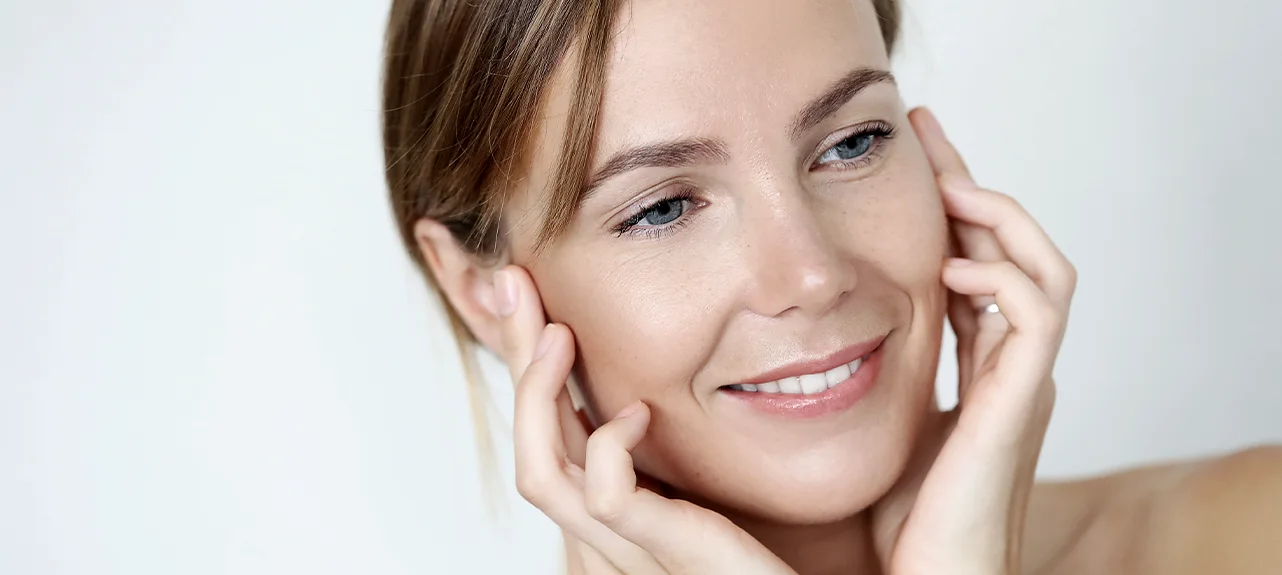Invisalign Braces.
Only for boundary-breakers .

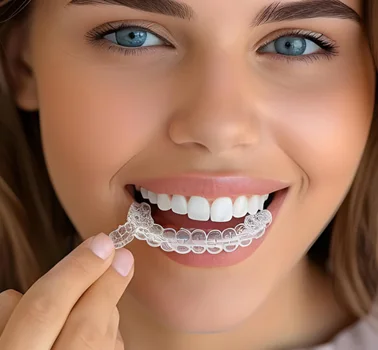
Beyond the dentristy.
If you've ever lost a tooth or needed a replacement, you might have heard about Invisalign Braces.
They are a popular solution that not only looks and feels like your natural teeth but also offers long-term benefits. In this page, we’ll walk you through everything you need to know about invisalign Braces in a simple and easy-to-understand way.
Invisalign Braces
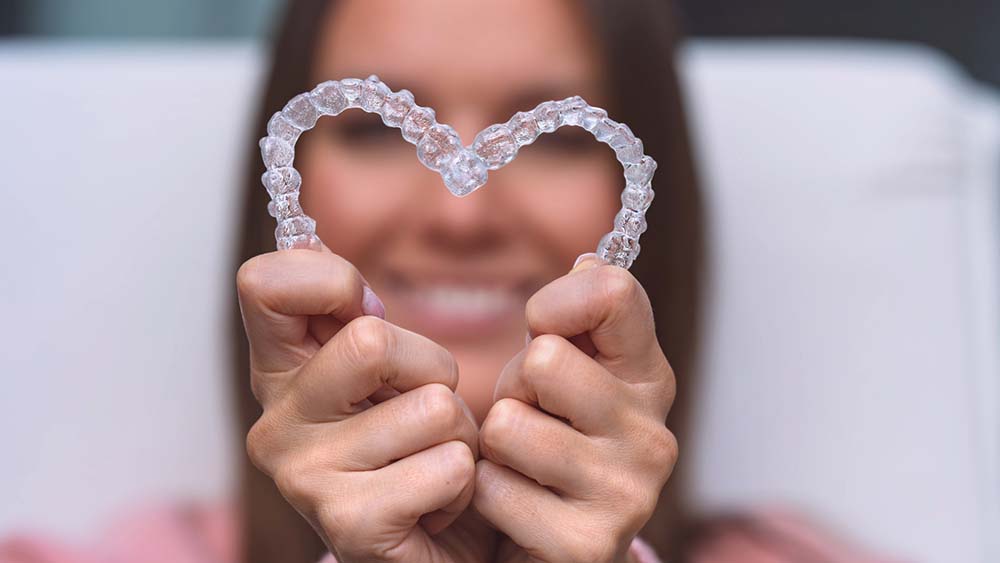
Invisalign braces are transparent and removable plastic aligners used for tooth alignment. These nearly invisible aligners have made orthodontic treatment more aesthetically pleasing than ever before, doing away with the need for unsightly metal brackets and wires. Similar to traditional metal braces, Invisalign aligners require a series of appointments to complete the therapy.
The Invisalign treatment was developed by Align Technology Inc. in 1997 and introduced to the public in 1999. Compared to the old-fashioned metal braces, this new invention was more aesthetically pleasing. Because the aligners are removable, patients can eat normally, wash their teeth normally, and floss more easily throughout treatment, all of which contribute to better oral hygiene. Not having to deal with issues like mouth irritation and pain caused by metal brackets and wires is another major perk. Still, it's more convenient and less time-consuming to visit the dentist less often while therapy is underway.
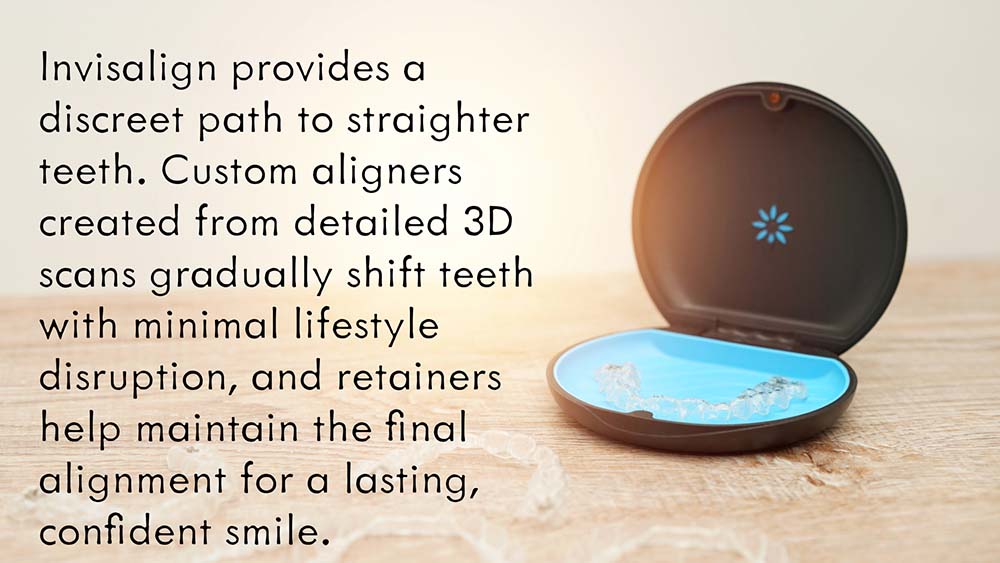
Invisalign treatment starts with a thorough consultation and inspection. Your orthodontist will assess your suitability for treatment by looking at your jaw and teeth. In order to photograph the precise condition of your teeth as they are right now, a model is made utilizing either 3D scanning or more conventional molds. To get a good idea of how your teeth will look after treatment, we digitally process this model using tools like ClinCheck.
Based on the plan, customized clear aligners are produced to gradually move your teeth. In some cases, small, tooth-colored attachments are also applied to make the teeth move more effectively.
Typically, patients wear their aligners for 20 to 22 hours each day during treatment. You are allowed to remove them for eating, drinking, and brushing your teeth. Typically, new sets of aligners are changed every two weeks; however, this frequency might vary from case to case. At scheduled appointments, your orthodontist can evaluate your treatment's progress and make any required revisions or extra scans. To keep your teeth in their new positions once treatment is over, you can wear removable or set retainers.
How long your Invisalign treatment takes depends on how badly your teeth are crooked, how well you follow your orthodontist's plan, and how long you wear the aligners. The usual treatment length, according to some sources, is 16–18 months; however, in more complicated instances, it might reach 22.8 months. If you don't utilize the aligners as directed for the full prescribed time, your treatment time will be far longer than necessary.
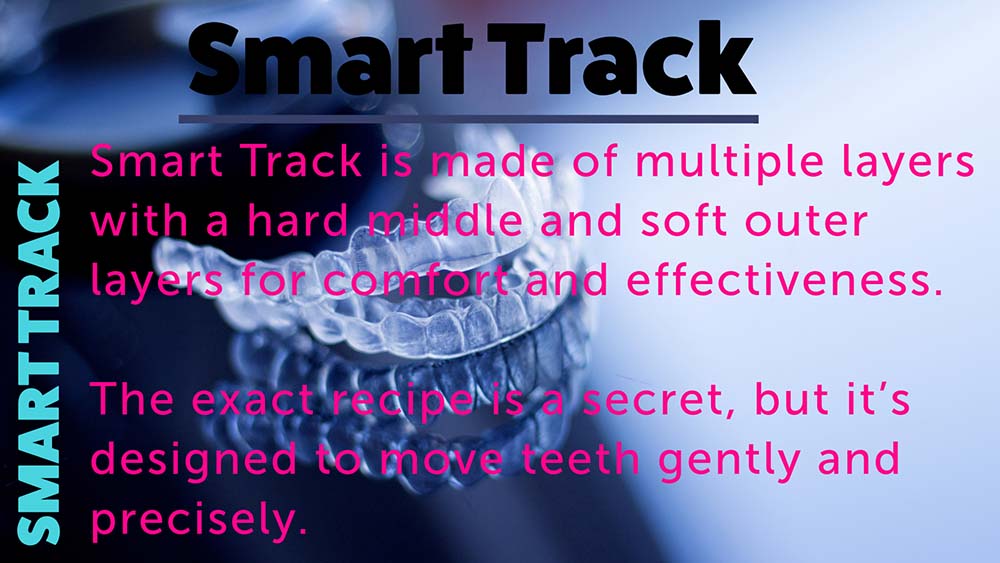
Invisalign aligners are made of transparent, thin and flexible thermoplastic materials. Thanks to this material, the aligners fit comfortably on your teeth and are almost unnoticeable. In addition, a new material called SmartTrack, which was introduced in 2013, is used to make tooth movements more controlled.
Typically, Invisalign aligners need to be changed every two weeks. However, this can be changed at various intervals, like once a week or every three weeks, based on the treatment plan, the rate at which your teeth move, and the evaluation of your orthodontist. To guarantee that your teeth progressively move into the proper position, it is crucial to have your aligners changed on a regular basis.
Invisalign aligners are significantly less noticeable than conventional braces due to their transparency. Nonetheless, it cannot be asserted that they are entirely imperceptible, since the minor attachments affixed to the teeth may occasionally be observed. During Invisalign treatment, the aligners must be removed while consuming food or beverages. This safeguards the aligners from staining or damage. The aligners may only be worn when consuming water; it is advisable to clean and reinsert them by brushing your teeth post-meal.
Invisalign aligners are removable, facilitating the brushing and flossing of teeth. The accumulation of food particles around the brackets and wires of traditional braces complicates the cleaning process. Consequently, utilizing Invisalign diminishes the likelihood of periodontal disease and dental caries. Invisalign is typically more pleasant as it lacks metal brackets and wires. Issues such as inflammation, lacerations, and discomfort in the oral cavity, prevalent with metal braces, are significantly diminished with Invisalign. Nevertheless, moderate pain or discomfort may occur when transitioning to a new aligner or when attachments are affixed; this typically subsides independently within a few period.
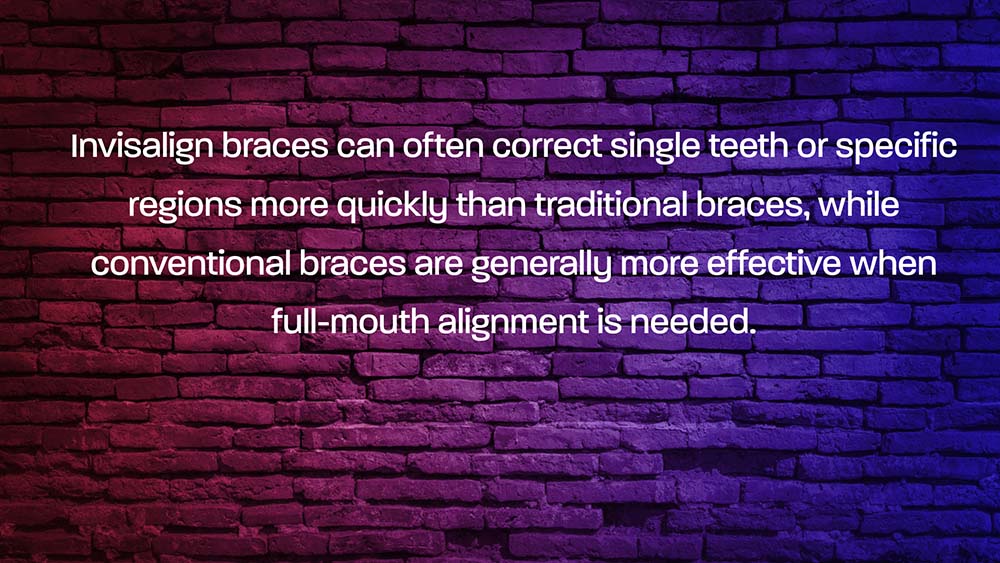
Both are great options for straightening teeth, fixing overbites, or addressing other orthodontic issues. In fact, both treatments can take around 18 months on average. But they work quite differently and offer distinct advantages. Let’s break it down in a friendly and straightforward way so you can figure out which one might be the best fit for you!
Invisalign uses clear, removable aligners that are practically invisible—seriously, people might not even notice you’re straightening your teeth! You can take them out whenever you want, which makes cleaning both the aligners and your teeth super easy. Small attachments are glued to your teeth to help with movement, but don’t worry, they’re not very noticeable. Here’s why Invisalign is awesome:
- Aesthetics: No metal, so your smile looks natural.Oral hygiene: Since they’re removable, keeping your teeth clean is a breeze.
- Removability: Take them out for eating, brushing, or flossing—total freedom!
- Comfort: No wires or brackets to irritate your mouth.
- Oral hygiene: Since they’re removable, keeping your teeth clean is a breeze.
Plus, most people feel more confident and comfortable with these nearly invisible aligners.
Traditional metal braces consist of brackets glued to your teeth and connected by wires. If you want to have a little fun, you can choose different colors—maybe even match your favorite sports team! But let’s be honest, metal braces are more noticeable, so they’re not exactly subtle. That said, they can be more effective for complex tooth movements, like rotating teeth or correcting serious bite issues. If your orthodontist says, “This might be a better option for you,” it’s worth considering.
Deciding which treatment is better depends on a few things: the current state of your teeth, your treatment goals, and your personal preferences. Let’s compare them side by side:
- assertedppearance: If you want your treatment to be as discreet as possible, Invisalign is the way to go. The clear aligners are nearly invisible, so people might not even realize you’re wearing them.
- Comfort and convenience: With Invisalign, you can remove the aligners for eating, brushing, or flossing. Metal braces are fixed in place, so you’ll need to work around them for meals and cleaning.
- Responsibility: Invisalign requires you to wear the aligners for 20-22 hours a day, so you need to be disciplined. If you forget, your treatment could take longer. Metal braces, on the other hand, are always working since they’re attached to your teeth.
- Diet and hygiene: With Invisalign, you can eat whatever you want—just remove the aligners. Metal braces come with some food restrictions (like avoiding sticky or hard foods) to prevent damage. Also, keeping your teeth clean is easier with Invisalign since you can brush and floss normally.
Invisalign treatment can provide faster results in simple cases, while traditional braces can provide faster progress in complex orthodontic problems. The average Invisalign treatment lasts 16 to 18 months, but the duration of treatment varies depending on case characteristics, the complexity of the teeth and the patient's compliance with the treatment.
Invisalign can be highly effective in treating mild to moderate malocclusions. However, for more complex dental problems, such as large anteroposterior (A-P) discrepancies, occlusal contacts or root movements, traditional braces may give more successful results. In addition, experts state that Invisalign treatment has its limits and in some cases, veneer application may be preferred to achieve a more aesthetic appearance.
Below you can check the prices of Invisalign treatment in different countries.
| Country | Local Currency Range | Approximate USD Range (Default Exchange Rate) |
|---|---|---|
| Turkey | 90.000 - 105.000 TL | 3.000 - 3.500 USD |
| England | 3.244 GBP | 4,000 USD |
| America | 4.500 - 5.000 USD | 4.500 - 5.000 USD |
| Germany | 3.000 - 4.500 EUR | 3.200 - 4.800 USD |
| Hungary | 1,500,000 - 2,000,000 HUF | 3.950 - 5.260 USD |
- People who are responsible and disciplined and can wear the aligners regularly (20-22 hours a day) and keep them clean.
- People with mild to moderate malocclusion (crowding, spacing, etc.).
- Adults and adolescents who have completed their growing age.
- Those who do not require tooth extraction or in simple extraction cases.
- Those who have aesthetic concerns and do not want visible metal brackets during treatment.
- People who have been treated before or have experienced recurrence cases.
- Crowding: Invisalign can correct mild to moderate crowding between 1-6 mm. In cases of severe crowding (≥ 6 mm), some teeth (e.g. mandibular incisors) may show undesirable changes (protrusion, proclination).
- Overbite (Deep bite): While maintaining normal bite, it can provide partial correction of deep bites.
- Underbite (Lower jaw retardation): Invisalign may not be sufficient for large anteroposterior (A-P) discrepancies; in these cases, traditional braces may give more effective results.
- Spacing Problems: Invisalign can also provide effective results for 1-5 mm spacing problems.
- Complex malocclusions: Invisalign may be inadequate for severe rotations, large A-P discrepancies and occlusal contact problems.
- Root movements: May be limited in moving tooth roots as desired, especially in posterior areas.
- Extraction cases: In cases requiring premolar extraction, the desired success in keeping teeth erect and closing gaps may not be achieved.
- Growing patients: Since there is insufficient evidence for growing individuals, it may not be suitable for this group.
- Cases requiring surgery: Invisalign alone is not an adequate treatment option in cases with severe skeletal problems and the need for orthognathic surgery.
- Severe bony problems: If there are serious problems in the bone structure, ideal results may not be obtained.
The best way to clean your Invisalign aligners is to gently clean the aligners with a toothbrush after brushing your teeth after meals. This will help prevent bacteria buildup on the plaque and discoloration. Also, soaking the aligners in a mixture of water and white vinegar (50/50 ratio) helps to remove stains and bacteria.
It is not recommended to drink coffee or tea while wearing Invisalign aligners, as these beverages can cause discoloration and staining of the aligners. Therefore, it is best to remove the aligners before consuming beverages such as coffee or tea, then brush your teeth and clean the aligners. You can leave the aligners in while you continue to drink only water.
Invisalign treatment is generally less painful than traditional metal braces. You may experience mild pain or discomfort when you put on a new aligner or attachment, which usually goes away on its own within a few days. Studies have shown that patients using Invisalign experience less discomfort, pain and need for analgesics during the first week. However, experiences may vary from person to person as each individual has a different pain threshold.
Below you can find frequently asked questions and answers about Invisalign braces.
Does Invisalign Affect Speech?
At the beginning of Invisalign treatment, some people may develop a temporary lisp that lasts several weeks. However, this usually resolves quickly and is not a permanent problem.
How Do You Know When Invisalign Treatment Is Complete?
Your dentist decides whether Invisalign treatment is complete after examining your teeth and assessing whether the treatment goals have been achieved. The treatment is considered complete when you and your dentist are satisfied with the result.
Do You Need a Retainer After Invisalign?
Yes, you need retainers to maintain the new position of your teeth after Invisalign treatment Retainers prevent the teeth from shifting again and ensure that the results are permanent.
How Long Do Invisalign Results Last?
The duration of your Invisalign results is dependent upon retainer usage and post-treatment oral hygiene. Consistent usage of retainers and diligent dental care can preserve Invisalign results for numerous years.
Can Teeth Shift Back After Invisalign?
Yes, teeth can shift back after Invisalign treatment if retainers are not used or not used regularly Therefore, it is very important that you wear retainers as recommended by your dentist.
Tips for Maintaining Your New Smile Post-Invisalign
You can follow these tips to maintain your new smile after Invisalign:
- Wear your retainers regularly: Wear your retainers as recommended by your dentist.
- Pay attention to your oral hygiene: Brush and floss your teeth regularly.
- Go for regular dental check-ups: Go for check-ups as often as your dentist recommends.
- Avoid bad habits that can affect your teeth: Avoid grinding your teeth or biting your nails.
Conclusion
Dental treatment has become much more enjoyable with options that offer a combination of aesthetics and comfort. Invisalign, thanks to its transparent aligners, hardly interrupts the daily routine, while traditional metal braces can offer a strong alternative in complex cases. Which one you choose depends entirely on your dentition, your expectations and your lifestyle.
The important thing is to have an open communication with your dentist to determine the method that you feel most comfortable with and that will best support your health. Being patient, following your dentist's advice and taking care of your teeth will also help you achieve the best results! Trust Avita Smile’s specialists—each with 20 to 30 years of acclaimed expertise—to guide you through your treatment with exceptional precision and reliability, ensuring remarkable results for your smile.
(1)- Braces versus Invisalign®: gingival parameters and patients’ satisfaction during treatment: a cross-sectional study A. Azaripour, J. Weusmann, B. Mahmoodi, D. Peppas, A. Gerhold-Ay, C. J. F. Van Noorden and B. Willershausen
(2) Journal of Advanced Medical and Dental Sciences Research Invisalign: A Transparent Braces
(3) What percentage of patients switch from Invisalign to braces? A retrospective study evaluating the conversion rate, number of refinement scans, and length of treatment Author links open overlay panel Neal D. Kravitz a, Bassel Dalloul b, Yara Aba Zaid c, Chandani Shah d, Nikhilesh R. Vaid
(4)Twitter analysis of the orthodontic patient experience with braces vs Invisalign Daniel Noll; Brendan Mahon; Bhavna Shroff; Caroline Carrico; Steven J. Lindauer Angle Orthod (2017) 87 (3): 377–383.
(5) Outcome assessment of Invisalign and traditional orthodontic treatment compared with the American Board of Orthodontics objective grading system Author links open overlay panel Garret Djeu, Clarence Shelton, Anthony Maganzini
(6)Clinical effectiveness of Invisalign® orthodontic treatment: a systematic review Review Open access Published: 28 September 2018 Volume 19, article number 37, (2018)
(7) Invisalign and Traditional Orthodontic Treatment Postretention Outcomes Compared Using the American Board of Orthodontics Objective Grading System Daniel Kuncio; Anthony Maganzini; Clarence Shelton; Katherine Freeman Angle Orthod (2007) 77 (5): 864–869.
(8) Li W, Wang S, Zhang Y. The effectiveness of the Invisalign appliance in extraction cases using the the ABO model grading system: a multicenter randomized controlled trial. Int J Clin Exp Med. 2015 May 15;8(5):8276-82. PMID: 26221410; PMCID: PMC4509355.
(9) Long-term Outcomes of Traditional Braces versus Invisalign in Orthodontic Treatment Reddy, Seelam Prudhvi Das1; Chekka, Manjunath2; Shah, Ruchi3; Kauser, Afreen4; Pisarla, Manish5; Datla, Praveen Kumar Varma6; Mahajan, Akriti7
Timeline to your new smile.
A more beautiful version of your present smile.
Dental Health is our super and only one specialisation.
Dental & oral health is our passion. The goal is a less obvious, natural and more beautiful version of your current smile and oral health.
Bright smile.
Illuminate your world with a smile that shines bright and exudes confidence.
Confidence booster.
Unlock your true potential with a smile that boosts your confidence.
Pure & perfect.
Experience the pinnacle of dental perfection with avita dental treatments.







